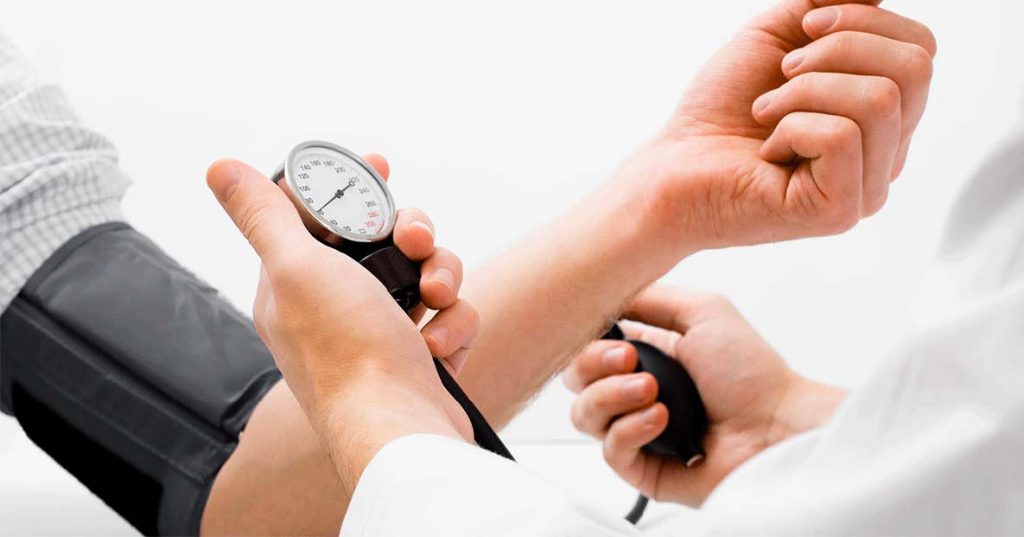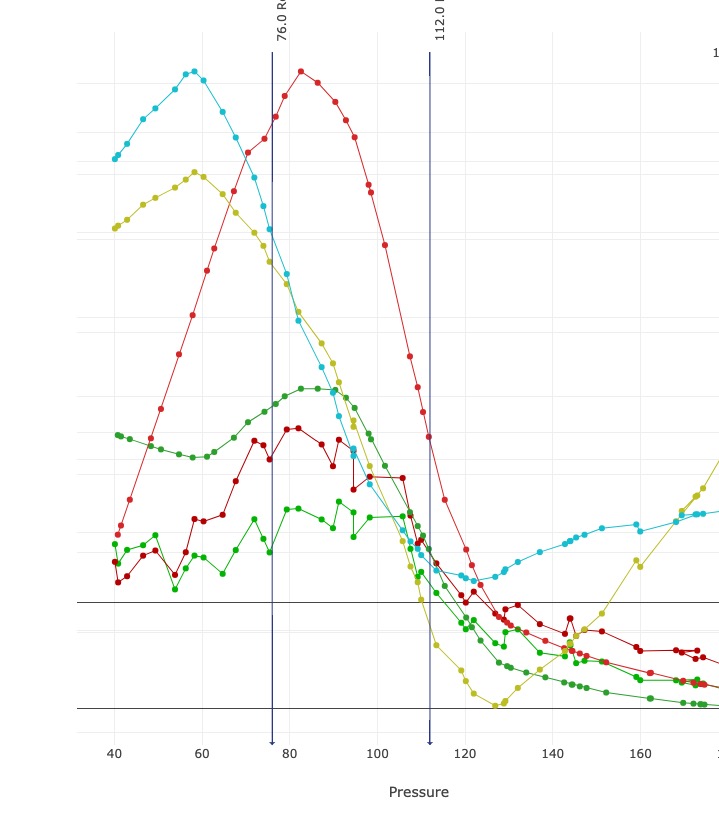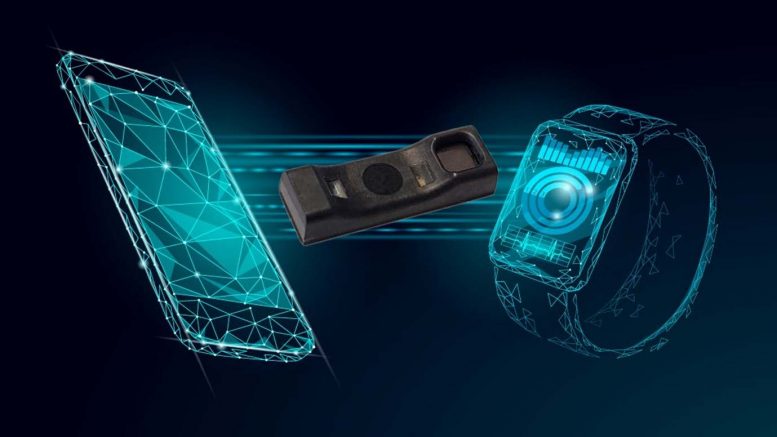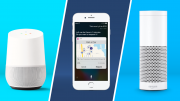There are many devices that claim to be able to estimate blood pressure in wearables or Smartphones. All except one need the user to measure the blood pressure first with a real pressure sensor and a cuff, and to remeasure it with the cuff frequently. They don’t even estimate blood pressure, they estimate the change in blood pressure since the last calibration.
High blood pressure kills as many people every four months as Covid-19 has killed since it first appeared. It is the single biggest cause of early death and is usually easily treated if you know that you have it.
The first measurement is the most important – once you have that, you know if you need to consult your doctor. A device that only works after you have made the first measurement with another device is not helpful.
The only BP measurement worth having is absolute and medically-accurate. There is only one truly cuffless device, the LMD V-Sensor, which reproduces the method known, understood and trusted by doctors for the last 100 years with the modern twist that it measures on your fingertip and, instead of a cuff, asks you to press harder or softer.
Before buying, or investing in, a “cuff-less” blood pressure device, ask the supplier one question “How often do I have to tell it the right answer with another device?”
Is it possible to measure your own blood pressure with medical accuracy with wearables, or device, without a cuff-device? To read recent articles in the media, many people would simply answer “yes” and think that of course, there are countless devices out now that enable any individual to do this should they wish or need to do so. But are they all capable of what they claim, or is it a case of “buyer beware”?
New technologies are always alluring at first – the latest TVs, sound systems, vehicles, all claim to deliver more features, more performance, superior ease of use, indeed everything, in a far superior way to any similar device that preceded it. Rush out and buy it! On closer inspection though, a dissection of the actual performance from the hype is needed to get to the real kernel of the benefits that can be expected.

Image | LMD
The traditional way of measuring blood pressure as used by doctors is with a cuff and a pressure meter, known as a sphygmomanometer, and using a stethoscope to detect the sound of the blood flow. The procedure is a familiar one: the cuff is placed around the upper arm and inflated, squeezing the artery and causing it to collapse or occlude which prevents blood from flowing; then the pressure is gradually released until the moment the blood begins to flow through again. At this point, systolic pressure is determined because the pressure in the cuff just balances the pressure in the artery during the contraction (beating) of the heart. The second, the diastolic value, is taken when blood flow is no longer restricted at all: it is the pressure when the heart is between beats. The two values are found from either on a column of mercury or a dial pressure gauge. The resulting reading is expressed as systolic over diastolic. A healthy reading for the majority of adults is around 120/80mm Hg, although this varies according to many factors, including age, fitness, even time of day and caffeine intake.
Moving on from this manual technique, there are many automatic cuff devices. These work in the same way but detect the small changes in the area of the arteries as the heart beats. These cause an increase in the pressure in the cuff which is sensed by the pressure sensor.
With the vast rise in smartphone ownership and the proliferation of wearables such as watches, many apps have been launched that claim to be able to estimate the user’s or wearer’s blood pressure using devices on the phone or sensors in the wearable. All except one claim to be able to estimate blood pressure without a pressure sensor. The rely instead on detecting something related to the speed at which the pulse travels down the arteries.
When the heart beats, a pulse of blood is squeezed into the arteries. This pulse forms a wave that travels at around 10 m per second, so reaches the extremities of the body in around ¼ of a second. Part of the wave is reflected at every branch of the artery so the pressure pattern at any point is a complex function of the speed of the wave and the individual physiology.
It is well known that the speed of the wave depends on the stiffness of the artery and the pressure inside it, so in principle one might infer the pressure inside it from the speed. This is how most of this recent raft of blood pressure measuring devices operate. All of these suffer from a fundamental limitation – they require calibration and frequent re-calibration with a cuff. You have to measure your blood pressure conventionally and tell the device what you measured. It will then tell you how much it has changed and, between a few days and a few weeks later, you have to measure again with the cuff and tell it the results.
The need for a first calibration is not surprising – everyone’s pattern of arteries is different in detail, as is the form of the pressure wave created by the heart and the distribution of stiffnesses across different types of artery. Frequent recalibrations are necessary because the physiology changes – the apparent stiffness of the artery depends also on the stiffness of the tissue surrounding it, which in turn is affected by hydration, muscle tone, amount of fat and many other physiological and even psychological parameters.
Given that these wearables do not measure blood pressure, they estimate change of blood pressure since the last measurement with a cuff, let’s look at how they work. They fall into four distinct groups as far as the technology they employ is concerned:
- Those that only use a camera in a phone
- Those that use a purely optical sensor
- Those that use optical and another sensor
- Those that use collateral data
Devices without a pressure sensor that estimate change of blood pressure
-
Apps that use only a camera in the phone
These claim to estimate BP by reading the pulse of a finger (usually the index finger) held against the phone camera lens or screen while the flashlight is shining on it and 10 – 15 seconds later you get a reading. The camera is used to detect the absorption of light by the arteries. As the arteries expand, more red light is absorbed. The signal that they derive is therefore related to the immediate area of the arteries and as the pressure rises, the arteries expand with the complex behaviour that arises from the many reflected waves.
It is then possible to use a technique called Pulse Wave Analysis to detect features of the shape of the waveform that can be related to blood pressure. This is usually done by machine learning or Artificial Intelligence, where signals are recorded from many different people at the same time as recording their blood pressure. The AI finds ways to relate the waveform to the measured blood pressure.
This difficult analysis is made even harder because the waveform depends on how hard the finger is pressed against the camera. Pressing raises the pressure in the tissue of the finger, so the area of the arteries (which depends on the difference between the pressure inside and outside the artery) is changed. The change is not constant – it depends on the instantaneous pressure – so the waveform changes.
Some apps go even further and claim to be able to use AI to analyse a video image of the face taken with a “Selfie” camera, a technique known as Transdermal Optical Imaging. This technique is non-contact so there is no effect due to how hard you push. Some published research has demonstrated that blood pressure prediction with this technique is as accurate as using a finger on the camera but the only device of this type to have achieved FDA clearance does not claim to measure blood pressure and is only intended for use in closely-controlled hospital conditions.
-
Wearables that use a purely optical sensor for measuring blood pressure
On most activity trackers and smart watches, LEDs shine light on the skin of the wrist and optical sensors make measurements of the reflected light. This is used to measure pulse rate and, if two colours of light are employed, it can also estimate the degree of oxygenation of the blood (known as SpO2). These sensors can also be used in the same way as the camera of a phone and have the advantages that they are optimised to detect arterial blood and, if in wearable, can provide continuous monitoring. Their challenge is that the pressure that they apply to the surface of the skin affects the waveform and this can change when the user moves around (an effect known as motion artifacts).
Again, it is necessary to calibrate and recalibrate frequently and some of the leading devices are sold with an automatic cuff.
-
Devices and wearables that estimate blood pressure using optical and another sensor
There are devices that estimate Pulse Wave Velocity directly, rather than inferring it from the waveform in a peripheral artery. These fall into two classes:
- Using an ECG to detect the electrical signal that triggers the heart to pump or using an accelerometer to detect the vibration when the heart pumps
- Using two optical sensors viewing different locations on the same artery and detecting the time delay of the pulse travelling between them.
The ECG may be detected using two electrodes, often one a finger of each hand. Smartphones routinely include an accelerometer so the vibration may be detected by holding the phone against the chest. There are two limitations with this technique:
- The triggering peak (QRS complex in the ECG, various positive and negative movements of the heart and its valves) does not coincide with the time that the pulse of blood is ejected. This Pre- Ejection Period varies between people so the time interval between the trigger and detecting the pulse at the periphery is made up of the PEP plus the propagation time
- The velocity can only be found if the effective distance between the heart and the periphery is known. In practice, it is necessary to estimate this using an alternative (such as how tall the user is) and an empirical rule.
The problem with two sensors is accuracy. The pulse in the artery does not jump up instantly, it rises over a period of about 50 mS and that varies with exercise and even between pulses. It is hard to measure its timing to better than 10mS, and the wave travels 100 mm in that time. Two sensors have to be very far apart to give an accurate estimate of the wave velocity. Even if it is found, there remains the problem that it varies with all of the physiological changes that demand frequent recalibration.
-
Devices that use collateral data
A new class of device has been reported that uses Pulse Wave Analysis of Pulse Wave Velocity together with extensive collateral data such as the user’s age, height, sex and weight. These have been trained using machine learning or Artificial Intelligence to analyse the data from many people using both the detected signal and the collateral data. It is claimed that these wearables may make an absolute estimate of blood pressure without the need for personal calibration using a cuff.
There is some uncertainty about the effectiveness of this approach and one of its leading exponents has recently joined the pure PWA camp by offering its solution with a cuff for personal calibrations. Even if it works, it raises a deeper and more worrying concern.
The collateral data alone can make a good estimate of your blood pressure. What it finds is the normal blood pressure for a person of your age, height, sex and weight. Since (by definition) most of us are normal, this gives a good estimate in most cases. Of course, it does not find the people who are abnormal, for whom accurate and early detection is vital. The international standard for blood pressure meters measure the average accuracy, so wearables or devices that tell you what your blood pressure should be can pass because the few anomalies are lost in the large number of normal people.
V-Sensor – proven science combined with new technology
There is only one way that is known to measure blood pressure accurately and non-invasively – it is the classic technique of occlusion, where pressure is applied to the tissue surrounding an artery to balance the pressure inside.

The V-Sensor finds many different parameters from the signal as
the user sweeps through the pressure range. e-Checkup’s
software analyses these to find the optimum measure of
Systolic and Diastolic pressures. This graph shows some of these
parameters, the reference values measured with a traditional
cuff and mercury column, and the results of the analysis.
LMD, a Swiss company, has brought this technique up-to-date with a tiny device about the size of a peanut that has been developed over the last decade and is now being integrated into smartphones and Bluetooth-enabled wearable devices.
LMD’s V-Sensor has an Application-Specific-IC (ASIC) which works with a phone as its computational brain. There is a MEMS pressure sensor embedded in flexible resin that transmits the pressure from an index finger placed on it to the ASIC. That’s a key difference from all the others – it measures blood pressure with a pressure sensor. Most people are unaware that there are arteries in the human index finger which are close to the surface of the skin. Pressure on those arteries cause them to collapse or occlude in the same way that a pressure cuff does when applied to the upper arm. A game-style interface on the smartphone app ensures that the user holds the correct finger pressure for around 45 seconds.
The V-Sensor also has an optical sensor consisting of two LEDs and a photodiode. The optical sensor shining through the skin can see the blood flow and measure both blood oxygen level from the colour of the blood (haemoglobin reflects light) and the pulse rate (bpm). It also incorporates an infra-red thermometer that gives medically-accurate temperature readings from scanning the forehead. Respiration rate is found from the effects of respiration on the pulse. The ASIC also includes circuitry to detect an ECG between the two hands.
LMD is the only manufacturer of such a device. After LMD developed and patented it, a prototype device using the same scientific principles was independently invented by the University of Michigan, which also confirmed that it measures blood pressure accurately and reliably without a cuff.
Featured article from LMD. A White Paper describing LMD’s unique solution is available on www.leman-micro.com.





